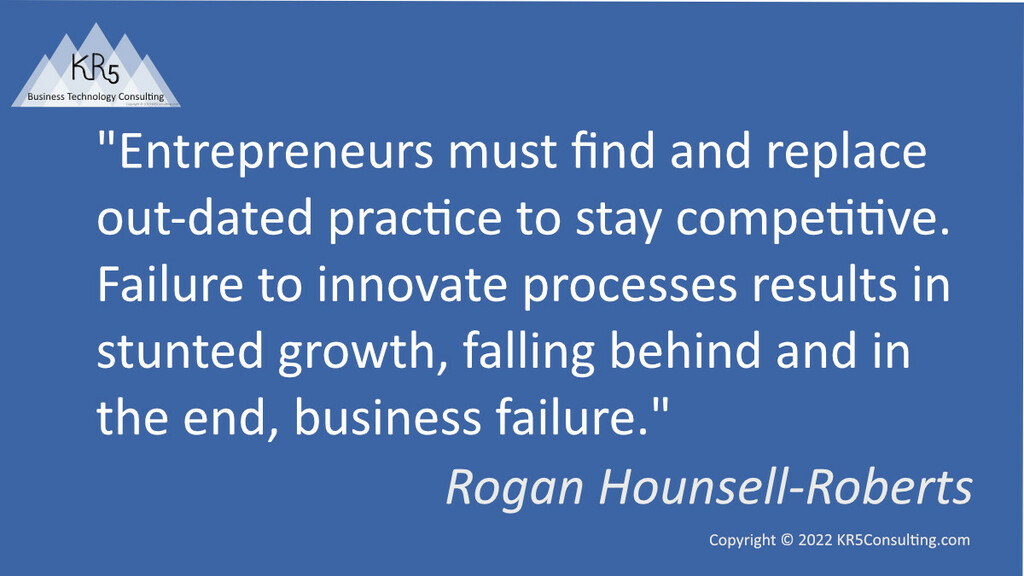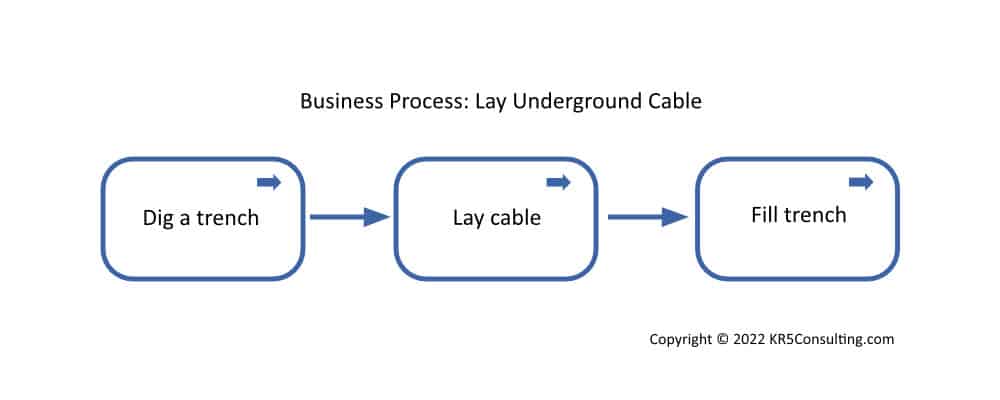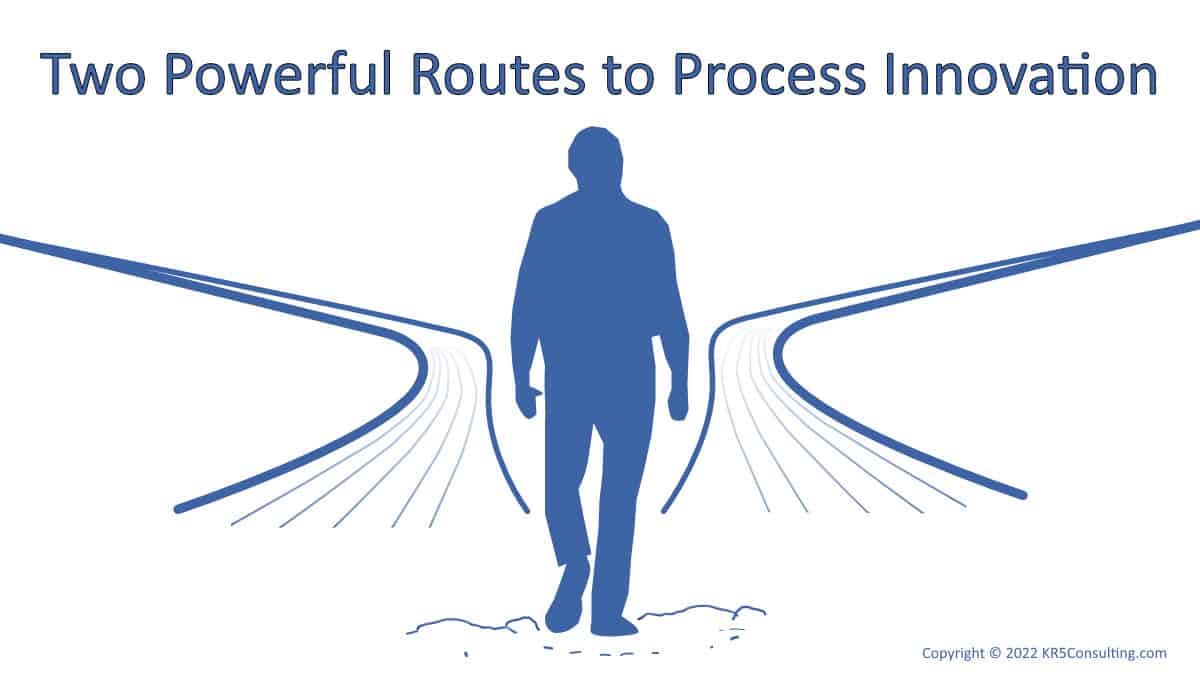As an owner and leader that’s looking for business growth, process innovation is vital. Not only does this level of change help the business compete, but it also creates space for growth. Without major change, there’s stunted growth and the business can quickly fall behind (taking you with it).
As a leader you know that you’ve got to stay alert to outdated and uncompetitive practices. In particular, you’ll look at where you create and deliver value for customers. But how do you innovate? It’s one thing to know it’s something you want to do, but another to do it.
In this article, we’ll look at two powerful ways to take a fresh look at your processes. Before we get into that, we’ll introduce what we mean, how it’s different from improvement, as well as the pros and cons.
Looking for an in-depth guide on the Business System? Check out Business System: An Essential Guide to Growth. This guide explains what it’s all about, why it’s important to business, and the steps involved.
Process Innovation Defined
Process innovation is a radical change to how your business creates or delivers its value. It’s about major change through new or improved processes. What’s more is that it’s usually a major change in your methods, tooling, or software. (OECD, 2005).
In other words, it’s about redesigning the way you do things to achieve your goals. For example, the goal of the McDonald brothers in 1948, was high volume and low cost (Britannica, 2021). They changed their process to have a self-service counter to reduce serving cost. In addition, they served food quickly as they pre-cooked and wrapped burgers ready to go instead of cooking to order.
Another process innovation that reduces delays and cost, is ordering pub food via an app. That resulted in pubs changing their process to take orders via the app and have separate staff deliver food to the table.

Process Innovation Vs Process Improvement
Process improvement is fine tuning. In contrast, innovation is a complete rethink. Indeed, an existing process might work well. It doesn’t need replacing as you can improve performance with minor changes.
On the other hand, minor improvements might not be enough. Your goal is too lofty for the existing process, and you’ll need a completely fresh approach. That’s when you need innovation.
Goals of Process Innovation
The goal of process innovation is some kind of business breakthrough. Indeed, you’re looking for 50% or more increase in value to make that happen. Of course, the specific business breakthrough is exciting, but here we’ll have to settle for the generic. What could you achieve if you could:
- Reduce time taken. That might be to improve customer satisfaction, improve your order-to-cash time, or for higher volume of sales (as in the case of the McDonalds brothers). An inspiring example is the RBS Bereavement Notifications which reduced the customer journey time from just under a month to a couple of days.
- Increase output. If you increase your output without increasing say staff cost, then you can increase revenue and profit. Likewise, you could manage peaks instead of losing orders to your competition!
- Reduce cost. For example, Whirlpool engineers aim to fix faults on their first visit reducing cost and improving satisfaction. They do this with technology to check the machine model number so that service engineers arrive with the right parts.
- Improve quality. As we’ve seen a new process can make it better for customers. Furthermore, reducing errors is a common reason for using technology.
- Increase service levels. Faster service, more output, and better quality can all result in better service levels.
Advantages of Process Innovation
Faster, more output, less cost, better quality, and higher service levels are five great advantages of process innovation. However, these are a means to an end. What does the business really gain from process innovation?
Growth, long-term success, and creating more value are the business gains. It’s often driven by gaps in the market, and a desire to excel in a unique and valuable way. For a more in-depth look at growth and long-term success, check out Strategic Planning: An Essential Guide to More Success.
Disadvantages of Process Innovation
The disadvantages of process innovation are disruption and risk. When you radically change a process, you’ve got to change your thinking and learn how to do it differently. Certainly, it involves learning new concepts, and using new tools in addition to a new process. That means it needs careful leadership to bring your staff with you.
As you’ve no doubt seen, business change has multiple risks. As well as the question of the solution working, there are risks of staff struggling with the changes and impacts on other parts of the business.
Two routes to process innovation
The problem is how do you get from where you are, to create the ideas for change. Your business goals will drive change (and if they don’t, they’re not big enough). Therefore, the challenge is how you change your thinking.
Here’s two great approaches to challenging your thinking that work well together.
Process Innovation: Taking a Business View
Our first approach takes a big step back to rethink what we’re doing. In other words what are we trying to achieve. Our thinking can stay in the familiar and the details. That results in only seeing it one way, and we miss the big picture. We need a business view to see the problem in a new light.
That view is from the high-level steps or business process. You can come at the problem fresh and avoid the distraction of all the twists and turns of your day-to-day process. For example, let’s say you needed to lay an underground cable. The business process is to dig a trench, lay the cable and re-fill the trench. Doing this by hand might take days in contrast to a machine finishing it in an hour. Whether it’s dug by hand or by machine the basic process doesn’t change, only the outcomes.

You can focus more on outcomes when you create a business view of the process and step back from the detail. Then you look for new ways to solve the problem. In the above example, leaders might discover that digging the trench takes 90% of the time. If the expected outcome is to lay cables in hours rather than days, they might ask if there was a faster way to dig a trench.
In practice, when you compare an actual process to a business process you may discover that you’re doing more than you need to. Taking that step back can highlight things that just don’t make sense anymore.
Process Innovation: Learn from software companies
You can learn from and get ideas on process innovation from software companies. If those companies are specialists in their field, they’ll be able to share their thinking and knowledge to help you. I’m not suggesting that you spend all your time talking with them. Select two or three that can help you think about a specific problem.
Firstly, identify the problem you want to solve as detailed above. Secondly, find software companies that have solutions. Then you can contact them for a demo and ask them what you want to know.
The demo will show how they solve the problem with their software. They usually have a standard demo or video that they use early in their sales cycle. A custom demo takes more of their time. Leave that until you’ve shortlisted and you’re ready to buy.
Demos are slick and designed to sell, so don’t get too excited. The objective is to learn about a fresh approach, not to buy. You’ll buy once you’ve understood what you need and done a proper evaluation.
Summary
Entrepreneurs must find and replace out-dated practice to stay competitive. Failure to innovate processes results in stunted growth, falling behind and in the end, business failure.
You need to see past how you do things today and explore new ways of working. You can look at the business process to find new ways to solve the problem. Alternatively, you can talk to software companies about how they would solve the problem.
Related Articles
Notes
- OECD, 2005, “The Measurement of Scientific and Technological Activities: Guidelines for Collecting and Interpreting Innovation Data: Oslo Manual, Third Edition”, OECD, Paris
- Britannica, T. Editors of Encyclopaedia (2021, September 10). McDonald’s. Encyclopaedia Britannica. https://www.britannica.com/topic/McDonalds

